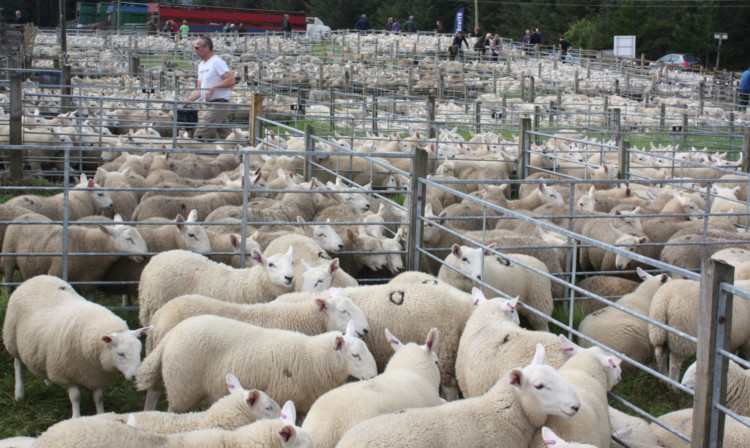It seems that asking to use an extra 5% of Scotland’s CAP budget for coupled payments may have been the easy part of the process.
Finding a way to tie the payments to production without distorting markets or creating unintended consequences looks like it will be by far more difficult.
This extra 5% of the budget appears to have been earmarked for the sheep sector but, as quickly became apparent at a special meeting at Ingliston of the National Sheep Association, there are almost as many permutations as there are sheep flocks in the country.
Indeed, at the end of a detailed explanation of a few of the options, Douglas Bell, senior consultant with Scotland’s Rural College, said: “I am still not sure of the merits of coupled support for sheep.
“As it stands at the moment extensive hill farmers appear to be winners anyway.”
He had already shown figures which showed that a 3,000-acre hill farm would see a 19% increase in Single Farm Payment under the current Scottish Government proposals.
This compared with specialist beef farms where there was a reduction of 15.2% on average and arable where the reduction was even greater at 19%.
The problem in the hill areas,or more accurately what are to be known as the Rough Grazing Region (RGR), was that under a simple area payment system too much money could go to farms with low stocking rates or indeed no stock at all.
“There could be a risk of unnatural selection of a new breed the soft shoe farmer, which would be subtly different from the slipper farmer,” said Mr Bell.
Based on 85% of the SFP pot going to arable, grassland and dairy land and 15% going to rough grazing, the respective payments would be 227 euros/ha and 25.5 euros/ha.
That figure included the 8% of the budget already earmarked for the beef calf scheme.
“But if we take up the option to couple another 5% to sheep these figures drop to 214 euros per ha and 24 euros,” Mr Bell said.
“Remember the coupled money is not new money it all comes out of the existing pot.
“So if you are an arable farmer this is not cheery news.”
One solution would be to change the split between good land and rough grazing to a ratio of 90:10, which would reduce the basic area payment for those who kept little or no stock to about 15 euros per hectare.
Those who kept stock would have a top-up from the coupled payments but would it be worth it?
Mr Bell suggested it might not.
Targeting would be very difficult.
The 5% coupling now available would amount to around 26m euros or 10 euros per ewe across the country and Mr Bell wondered if this would be enough to justify the extra compliance measures.
If it was applied only to rough grazing at very low stocking rates, it might come to 70 euros or even 90 euros per ewe, which Mr Bell described as too much and “clearly nonsense”.
He stressed he was not ruling out coupled payments for the sheep sector but it was very much up to the industry to say how it would like to see them targeted.
Jeremy Moody, secretary of the Central Association of Agricultural Valuers, agreed, saying it was important not to look just at the immediate impact of coupling but at the long-term effect on the sheep sector.
He said: “Ask yourselves if this is not more about covert support for purchasers and processors. They may well just take this extra support off you or it may be taken in higher rents.
“The important thing is to look at what will leave the sheep sector in good fettle for the long term.”
George Milne, national manager for the NSA in Scotland, was, however, adamant that every avenue had to be explored to make coupling work.
“If we don’t use this option which Richard Lochhead has asked for, the money will disappear and we won’t be able to ask for it again,” he said.
Mr Moody had already pointed out the coupled money might vanish in any event.
If it resulted in ewe numbers increasing rather than just being maintained, the EU would judge the measure as being incompatible with the rules.
